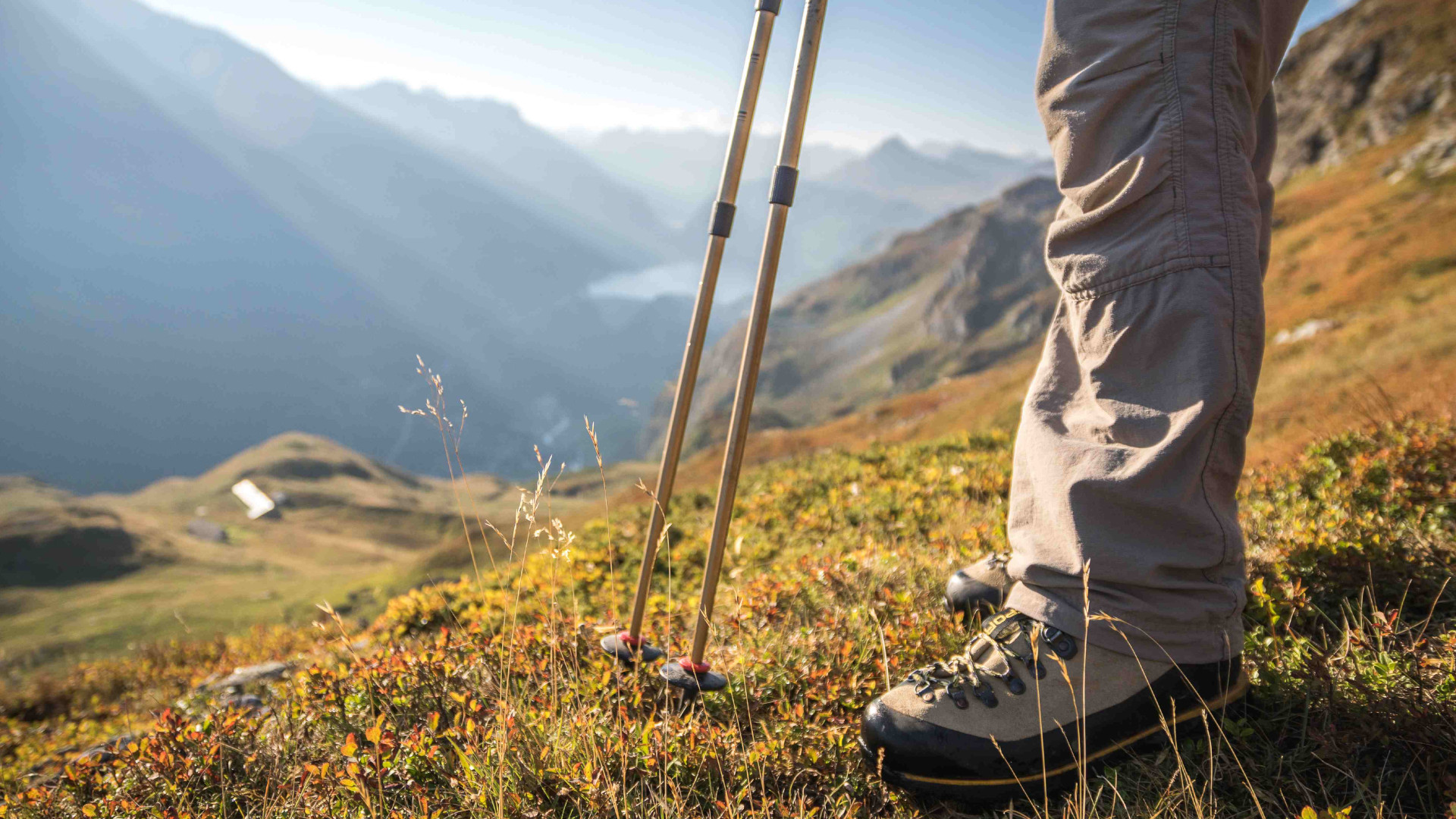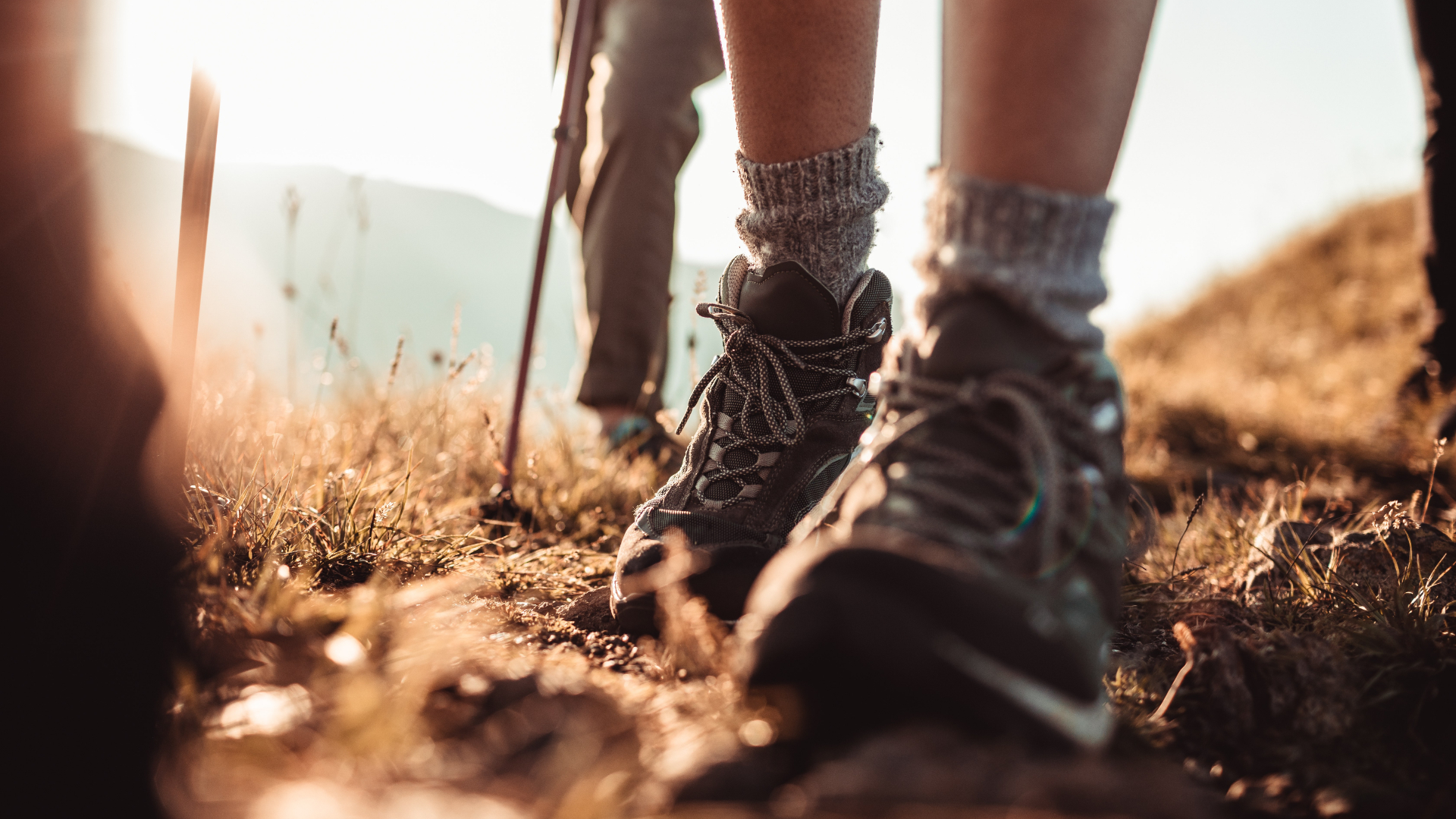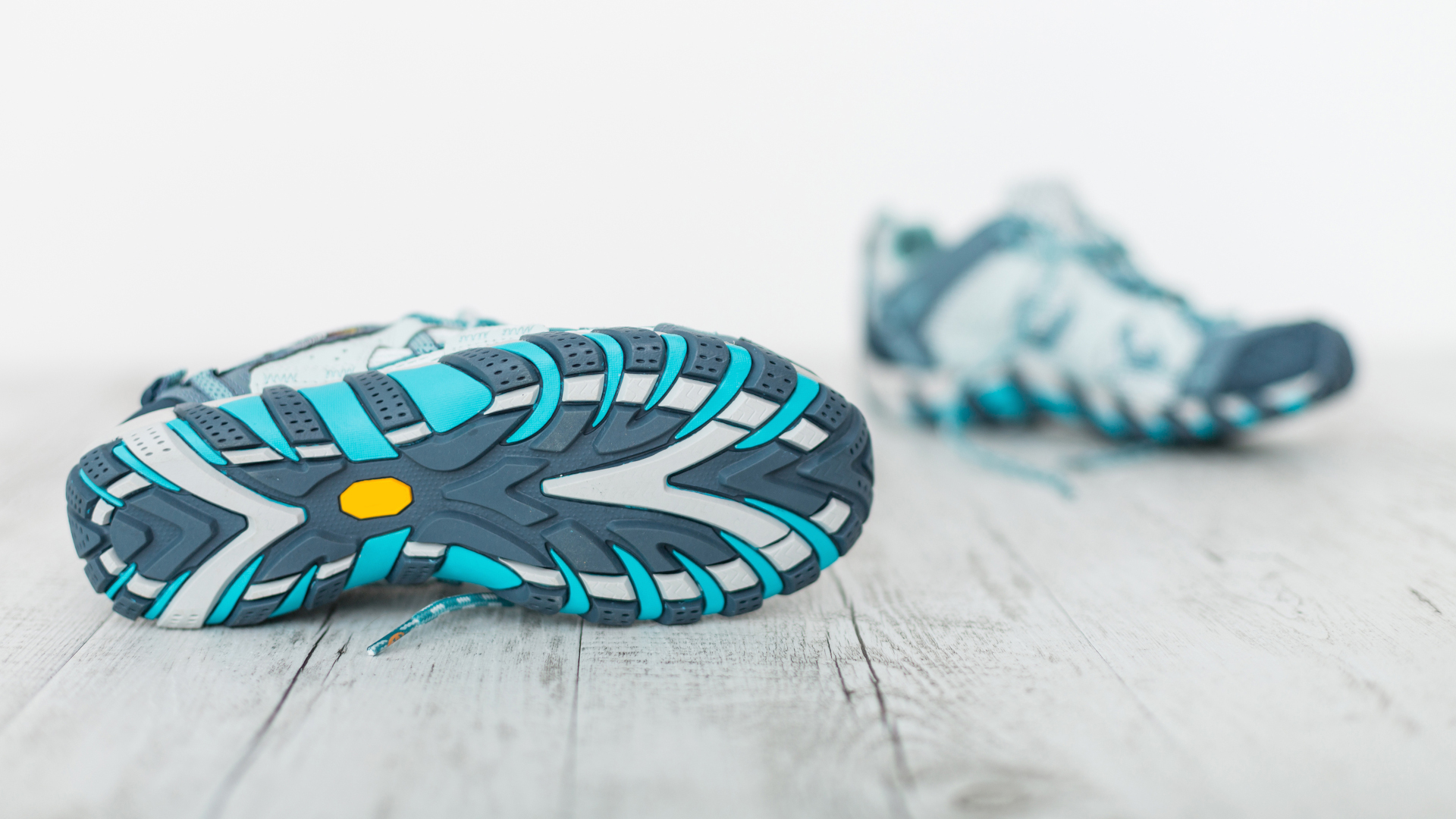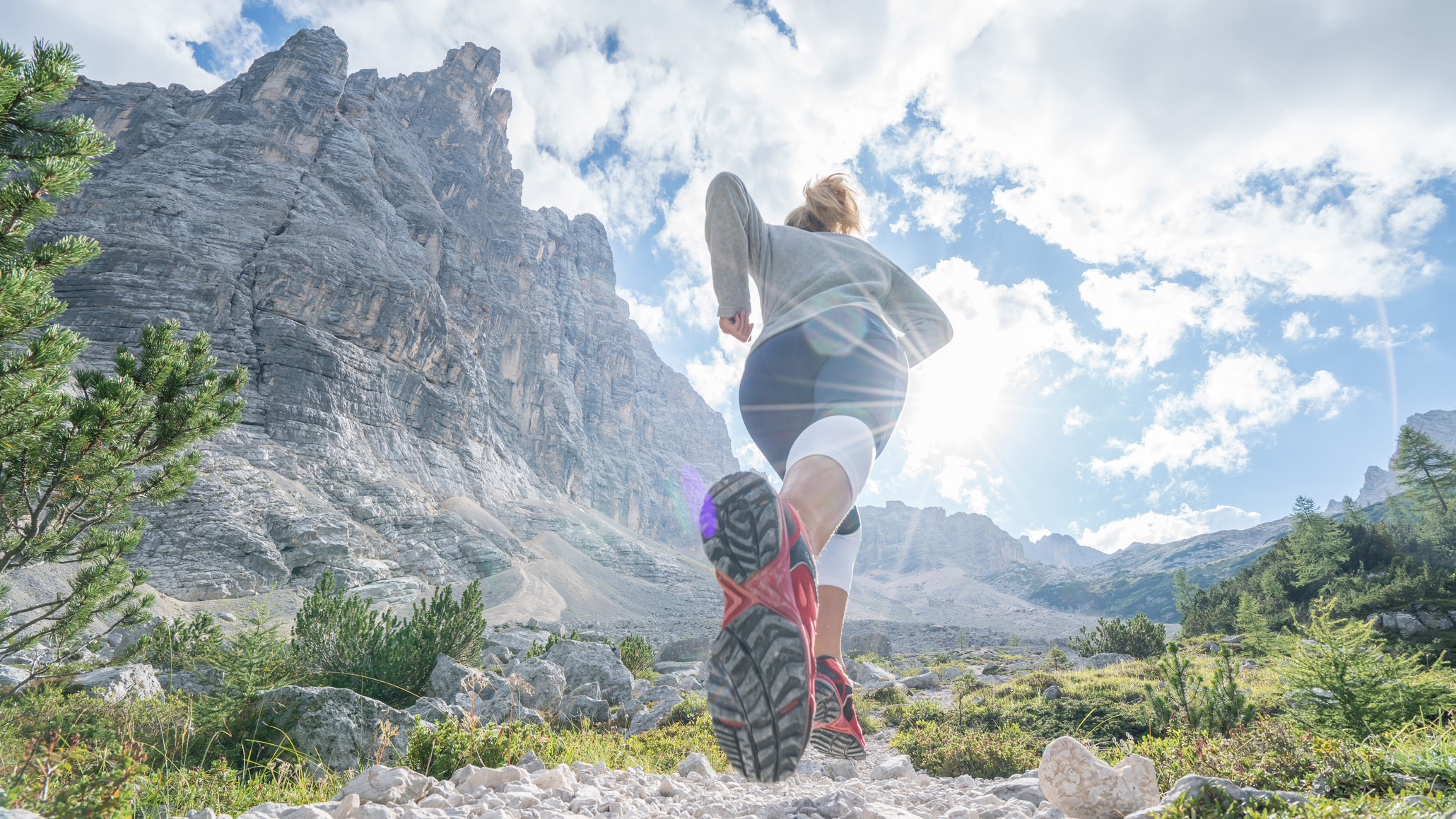Hiking shoes vs trail running shoes: which is best for you?
We weigh in on the pros and cons of hiking shoes vs trail running shoes to help you choose the best lightweight, low cut option for your next adventure

So you've been researching the different types of hiking shoes, and you've discovered a whole new world. The traditional, stiff leather hiking boot may still be widely available, but its uncompromising reign over the hiking footwear world is over. Today there are a ton of lightweight options for those that like to travel light, feel the trail underfoot or simply feel more comfortable in low-cut shoes rather than bulky boots, particularly on less technical tracks, with little ankle-threatening terrain. Two top choices are the best hiking shoes and best trail running shoes, but what are they, what are the differences, and what are the benefits of each? We weigh in on the pros and cons of hiking shoes vs trail running shoes to help you choose the best lightweight, low cut option for your next adventure.
- Road running vs trail running: the pros and the cons
- Find out the benefits of trail running shoes vs hiking boots

Hiking shoes vs trail running shoes: what's the difference?
First of all, what's the difference between the two? Aren't they both just fancy names for sneakers?
Hiking shoes are really a more flexible, lighter alternative to hiking boots for those who don’t need the ankle support, protection and warmth that the more traditional footwear brings, usually because they’re tackling less rocky or challenging trails in relatively good conditions. Some hiking shoes are simply a version of a brand’s boot, minus the higher cuff.
Trail running shoes are basically a cross between a walking shoe and a road-running trainer: lighter, more flexible, highly breathable, and hence less protective and less durable.

Hiking shoes vs trail running shoes: weight
While both options are lighter weight than their hiking boot predecessor, hiking shoes will most likely be heavier, with trail running shoes being the lightest option.
Hiking shoes vs trail running shoes: protection
Compared to trail running shoes, hiking shoes are sturdier and more robust, so they'll offer better protection against sharp rocks. Trail running shoes won’t offer the same level of protection or longevity as a proper hiking shoe.

Hiking shoes vs trail running shoes: grip
The sole of a hiking shoe is usually much more substantial, so there’s no need for an internal rockplate to protect your foot from sharp sticks and stones. The grip is more like that of a hiking boot, so it will work well on lots of different terrain but is mainly suited to good, well-kept paths.
All the latest inspiration, tips and guides to help you plan your next Advnture!
Sole-wise, there's much more variation in trail running shoes. They range from having not much more grip than a road-running shoe to featuring deep lugs for multi-terrain use, some with cleats almost like football boots for negotiating deep mud and squelchy bogs.
Hiking shoes vs trail running shoes: waterproofing
Hiking shoes are often waterproof, typically featuring a Gore-Tex or own-brand membrane, or they might be made of leather.
Trail running shoes are not often waterproof, as this would make them too hot and sweaty for running. Water is likely to get in over the top of the shoe when runners splash through puddles anyway, and it would drain slower through a waterproof membrane, making the shoe heavy and your foot prone to shrivelling up like a prune in its inescapable, salty, gritty bath.

Hiking shoes vs trail running shoes: appearance
Hiking shoes tend to look less ‘sporty’, and are often available in more muted colours (brown, black and navy are very popular), so beyond the mountainside you could wear them around town to keep your feet comfy.
Trail running shoes are often brightly coloured, as if to proclaim 'I’m a runner!' loudly at passers-by. As a result, they can be less useful as a multi-use shoe for people to wear casually elsewhere (though they’re usually so muddy no one would let you in anyway).
Hiking shoes vs trail running shoes: versatility
If you fancied breaking into a jog while hiking in the hills and mountains while wearing hiking shoes you could easily do so, but the stiffness, weight and waterproofing means they’re not great for all-day running. Compared to hiking boots, however, they will feel light, and they lend themselves perfectly to long walks in good conditions.
Trail running shoes are pretty versatile – after all, if you can run in them, you can also walk in them, so they're great for those who like to mix up the pace.

| Header Cell - Column 0 | Hiking shoes | Trail running shoes |
|---|---|---|
| Weight | Lighter than a boot, heavier than a trail running shoe | Lighter than a hiking shoe |
| Protection | Better protection against bumps and sharp rocks | Less protection |
| Grip | Good grip with deep lugs | Grip varies according to shoe |
| Waterproofing | Usually waterproof | Not often waterproof |
| Appearance | Understated colors, less sporty | Usually sporty and brightly colored |
| Versatility | Great for walking | Can be worn for walking and running |
Hiking shoes vs trail running shoes: the verdict
As always, it depends how fast or light you want to go, how much money you have to spend on shoes for different occasions, and how much space you have on your shoe rack, because the annoying verdict is that it’s useful to have both types of shoe available as an option.
But, if you have to choose and you’re primarily a runner, go for the trail shoes. You will have no problems hiking in a multi-terrain trail shoe through most seasons.
Likewise, if you mostly walk, opt for hiking shoes. With some post-hiking aftercare, they should last many years, and will still allow you to break into a nice trot down the hills if you fancy speeding up. Just don’t expect to run all day in these stiffer, heavier options, which would likely overcook your feet.
And if neither option sounds like the right choice, then consider approach shoes, a subspecies of hiking shoe used by many rock climbers to walk to their crag of choice, if it happens to be accessed by trails. These tend to be defined by a stiffer midsole and a stickier rubber undersole, to provide grip and support while scrambling and ‘edging’ around rocks, but they can also be used simply for hiking.
The co-founder and former editor of Trail Running magazine, Claire now runs the YouTube channel Wild Ginger Running, creating films about trail- and ultra-running advice, inspiration, races and gear reviews. An award-winning journalist, writing for outdoor and adventure sports magazines and websites, Claire's first book, The Ultimate Trail Running Handbook (5k to 50k), is out now. Her second, The Ultimate Ultra Running Handbook (50k to 100 miles), is out Autumn 2024. Claire also speaks and presents at events and races.

